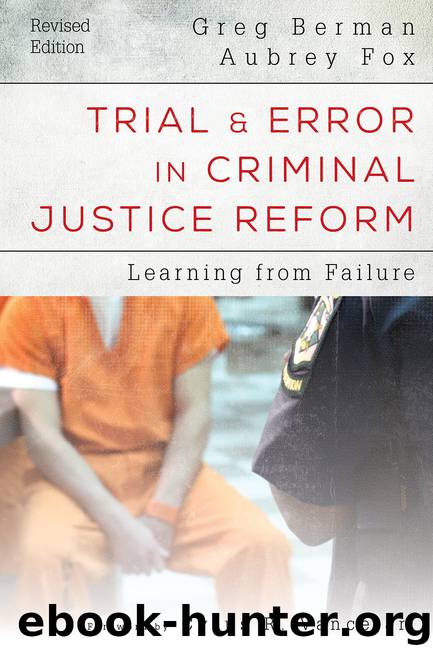Trial and Error in Criminal Justice Reform: Learning from Failure (Urban Institute Press) by Fox Aubrey & Berman Greg

Author:Fox, Aubrey & Berman, Greg [Fox, Aubrey]
Language: eng
Format: epub
Publisher: Rowman & Littlefield Publishers
Published: 2016-03-20T16:00:00+00:00
A Changed Job
In tracing the story of California’s penal policy from Richard McGee to the 1977 Determinate Sentencing Act to the present day, one theme stands out: the communication breakdown between criminal justice officials and researchers on one hand, and elected officials and the public on the other. It is possible to argue that, during Richard McGee’s time, the scales of power tilted too heavily in favor of the former, that criminal justice officials were given too much latitude and were insufficiently responsive to public concerns. Today, the opposite is true, and California has found it almost impossible to claw its way back to equilibrium.
The job of a correctional administrator has changed so much since Richard McGee’s time that it is almost unrecognizable. The prestige and respect accorded to individuals like McGee is largely gone. “These are politically volatile, exhausting positions for people,” said Thomas Hoffman, California’s director of adult parole operations. “This organization has been under the microscope. . . . There’s not a day when there isn’t some ‘hair on fire’ disaster” (Hoffman 2008).
There is plenty of blame to go around. Criminal justice officials in California have made decisions that have eroded their own authority. Cutting the research unit may have made short-term fiscal sense, but it deprived McGee’s successors of a valuable tool in the fight over correctional policy. In a withering assessment of the state of the department in the early part of this decade, professor Joan Petersilia (2008, 343) wrote that:
California corrections had virtually gotten out of the research business and correctional policy had suffered considerably. Programs were implemented with little regard to rigorous evidence, and, once implemented, few programs were evaluated. Moreover, California officials had become professionally isolated. They seldom hired corrections professionals from outside the state, they did not participate in the nation’s professional organizations, such as the American Correctional Association, nor did they attend professional conferences where they could have learned about the advances in evidence-based practices and the vast literature on “what works” in corrections .
The result, according to Petersilia, was that California was increasingly “out of step with national best practices” (Petersilia 2008, 343).
Download
This site does not store any files on its server. We only index and link to content provided by other sites. Please contact the content providers to delete copyright contents if any and email us, we'll remove relevant links or contents immediately.
The Secret History by Donna Tartt(16698)
The Social Justice Warrior Handbook by Lisa De Pasquale(11501)
Thirteen Reasons Why by Jay Asher(7818)
This Is How You Lose Her by Junot Diaz(5812)
Weapons of Math Destruction by Cathy O'Neil(5065)
Zero to One by Peter Thiel(4850)
The Myth of the Strong Leader by Archie Brown(4801)
Promise Me, Dad by Joe Biden(4464)
Beartown by Fredrik Backman(4454)
How Democracies Die by Steven Levitsky & Daniel Ziblatt(4437)
Stone's Rules by Roger Stone(4430)
The Fire Next Time by James Baldwin(4358)
100 Deadly Skills by Clint Emerson(4099)
A Higher Loyalty: Truth, Lies, and Leadership by James Comey(4047)
Rise and Kill First by Ronen Bergman(4033)
The David Icke Guide to the Global Conspiracy (and how to end it) by David Icke(3902)
The Farm by Tom Rob Smith(3887)
Secrecy World by Jake Bernstein(3797)
The Doomsday Machine by Daniel Ellsberg(3744)
